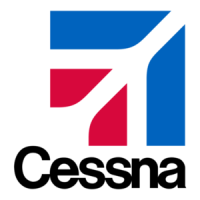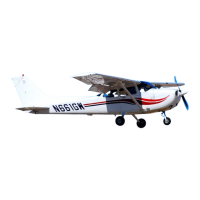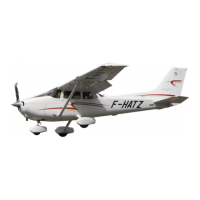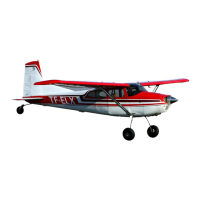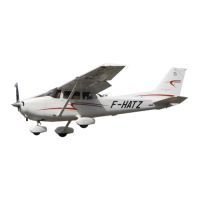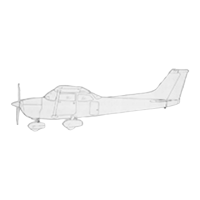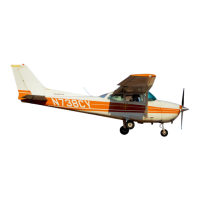CESSNA
MODEL 182T NAV
Ill
SECTION 4
NORMAL PROCEDURES
TAKEOFF
(Continued)
WING FLAP SETTINGS
Normal takeoffs use wing flaps
LIP
-
20" (10" preferred). Using 20
wing flaps reduces the ground roll and total distance over
a1
obstacle by approximately 20 percent.
Flap deflections greate
than
20"
are not approved for takeoff.
If
20" wing flaps are use(
for takeoff, the flaps should stay at 20" until all obstacles arc
cleared and a safe flap retraction speed of 70 KlAS is reached. Fo
a short field, 20" wing flaps and an obstacle clearance speed of
6(
KlAS should be used.
Soft or rough field takeoffs are performed with 20" flaps by lifting
the airplane off the ground as soon as practical in a slightly tail low
attitude. If no obstacles are ahead, the airplane should be leveled
off immediately to accelerate to a higher climb speed. When
departing a soft field with an aft C.G. loading, the elevator trim
control should be adjusted towards the nose down direction to give
comfortable control wheel forces during the initial climb.
I
CROSSWIND TAKEOFF
Takeoffs under strong crosswind conditions normally are performed
with the minimum flap setting necessary for the field length, to
minimize the drift angle immediately after takeoff. With the ailerons
partially deflected into the wind, the airplane is accelerated to a
speed slightly higher than normal, then the elevator control is used
to quickly, but carefully, lift the airplane off the ground and to
prevent possible settling back to the runway while drifting. When
clear of the ground, make a coordinated turn into the wind to correct
for drift.
I
U.S.
4-33
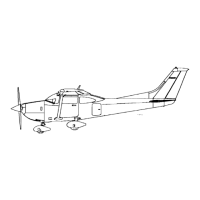
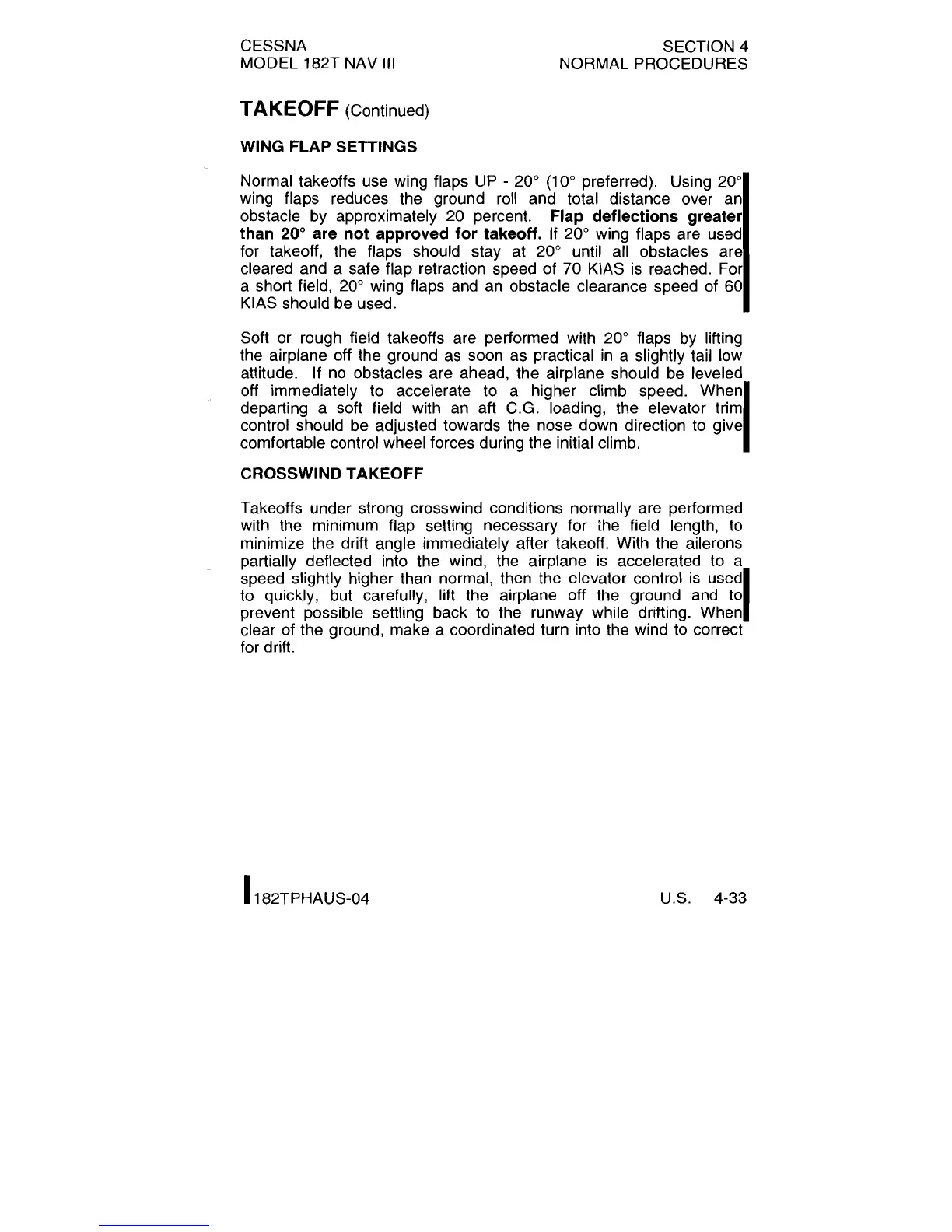